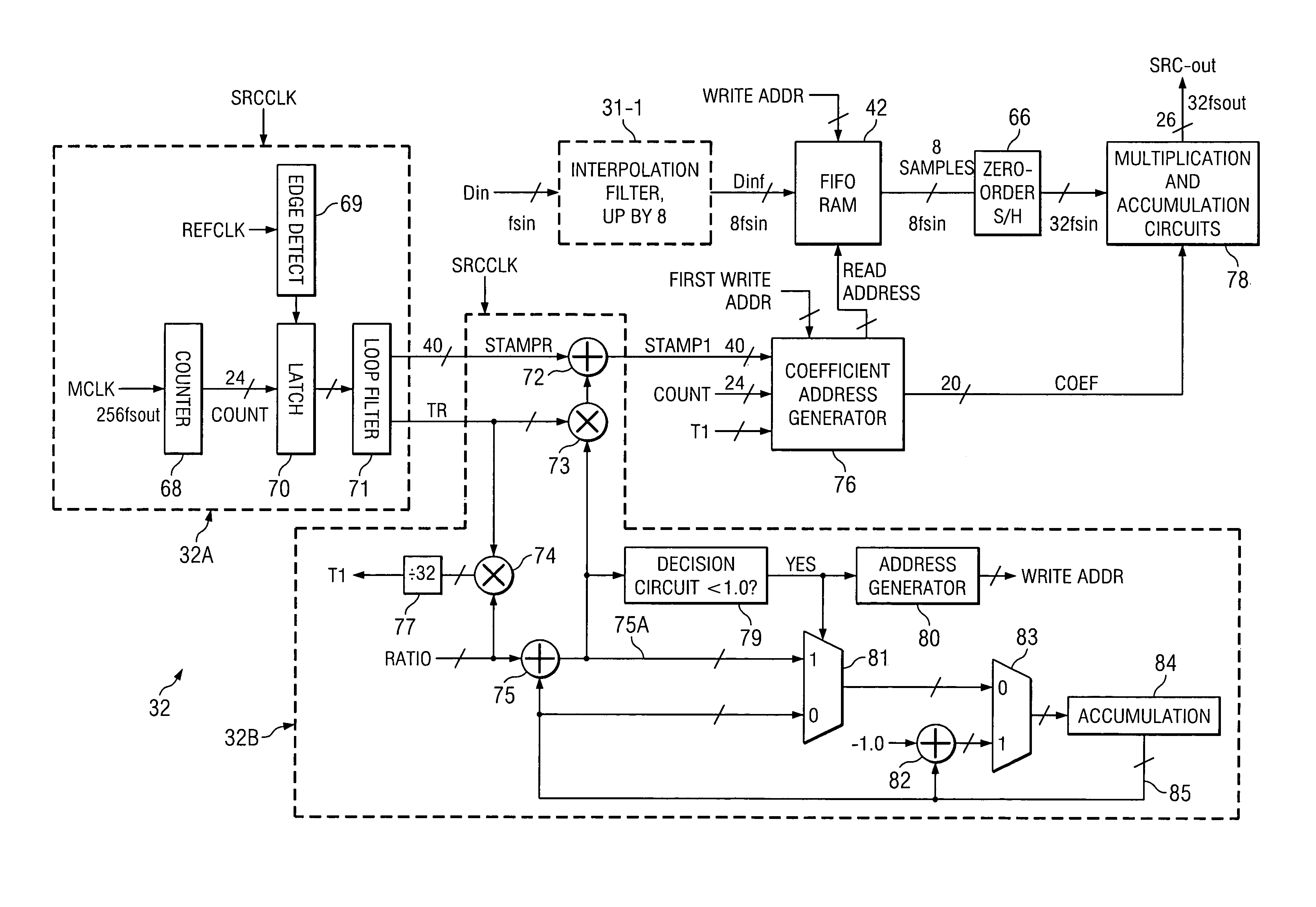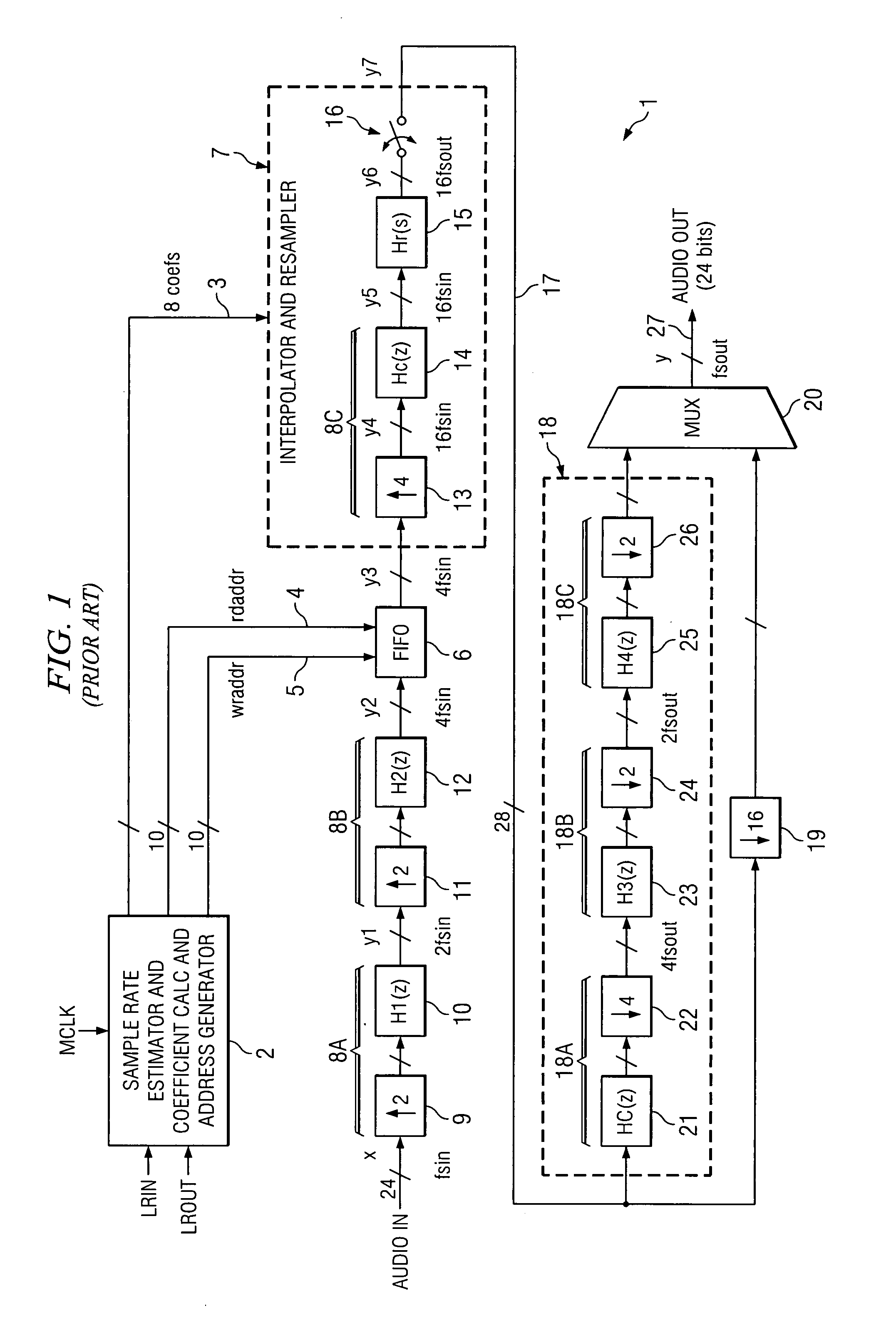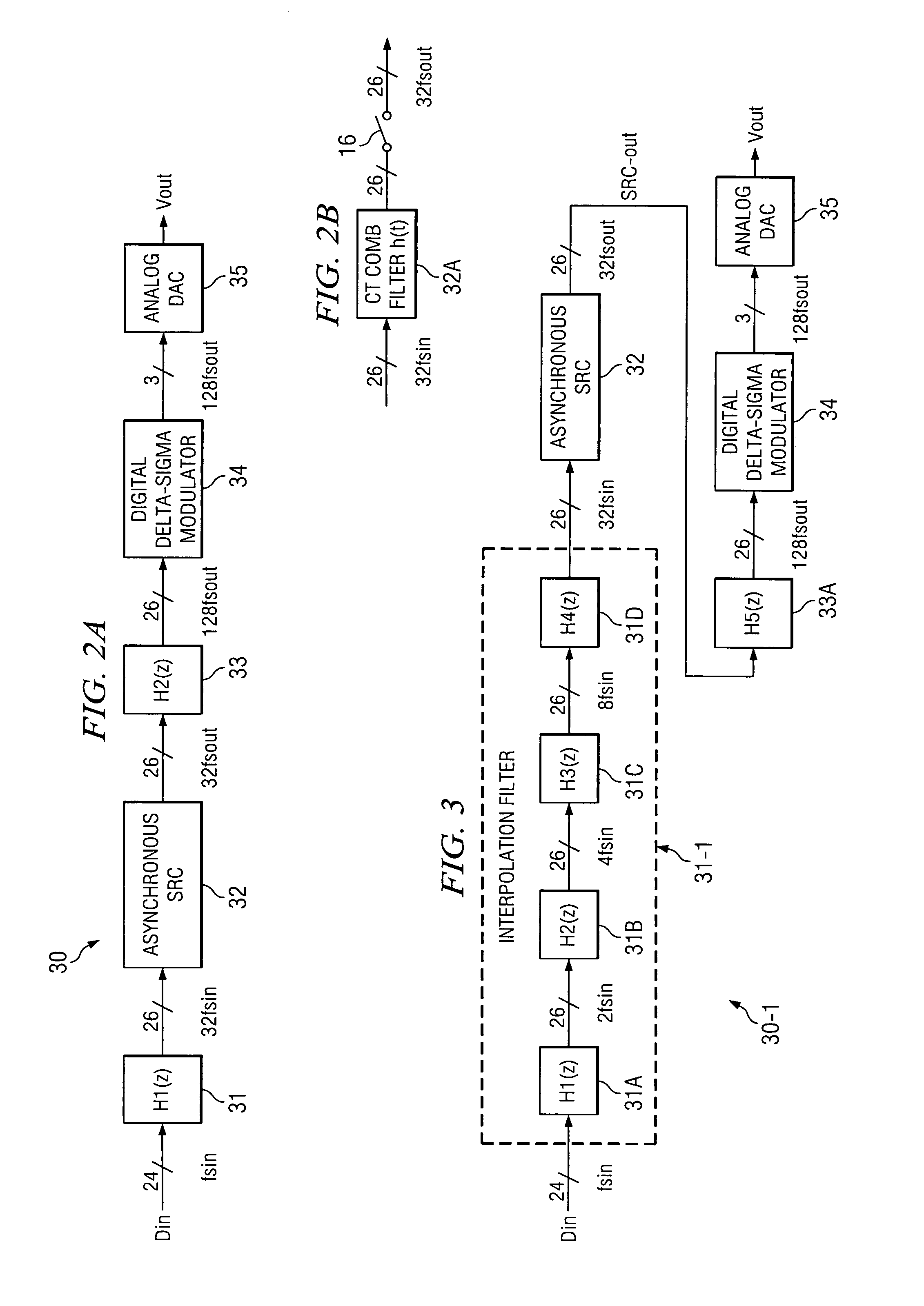Asynchronous sampling rate converter and method for audio DAC
- Summary
- Abstract
- Description
- Claims
- Application Information
AI Technical Summary
Benefits of technology
Problems solved by technology
Method used
Image
Examples
Embodiment Construction
[0042]FIG. 2A shows an “audio DAC”30 including an interpolation circuit 31 having a transfer characteristic H1(z). To reduce the complexity of the asynchronous sampling rate converter (SRC) 32 thereof, the audio input data is interpolated before the sampling rate conversion. Interpolation filter 31 up-samples the 24-bit digital input data signal Din from an audio input sample rate fsin to produce a 26-bit signal with a sample rate of 32fsin, z being the operator of a z transforms for discrete-time systems and signals. The output of interpolation circuit 31 is applied to the input of asynchronous SRC 32, which as subsequently explained, is clocked by a reference clock signal (e.g., the REFCLK signal in subsequently described FIGS. 4A-D and 5) which can be derived from a 32.768 kHz clock signal SLEEPCLK commonly used in cell phones. SRC 32 also is clocked in response to a clock signal OSCLK generated by an on-chip oscillator 63 (shown in FIG. 5). SRC 32 converts its input signal sampl...
PUM
 Login to View More
Login to View More Abstract
Description
Claims
Application Information
 Login to View More
Login to View More - R&D
- Intellectual Property
- Life Sciences
- Materials
- Tech Scout
- Unparalleled Data Quality
- Higher Quality Content
- 60% Fewer Hallucinations
Browse by: Latest US Patents, China's latest patents, Technical Efficacy Thesaurus, Application Domain, Technology Topic, Popular Technical Reports.
© 2025 PatSnap. All rights reserved.Legal|Privacy policy|Modern Slavery Act Transparency Statement|Sitemap|About US| Contact US: help@patsnap.com



